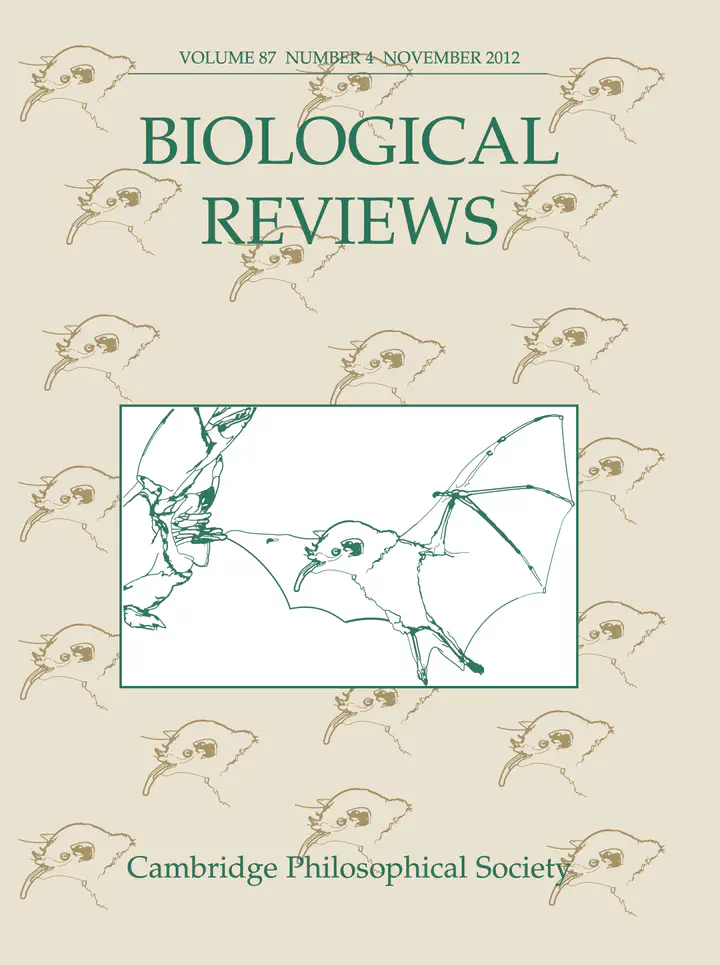Understanding phylogenetic incongruence: lessons from phyllostomid bats
 Image credit: L.M. Dávalos
Image credit: L.M. Dávalos
Abstract
All characters and trait systems in an organism share a common evolutionary history that can be estimated using phylogenetic methods. However, differential rates of change and the evolutionary mechanisms driving those rates result in pervasive phylogenetic conflict. These drivers need to be uncovered because mismatches between evolutionary processes and phylogenetic models can lead to high confidence in incorrect hypotheses. Incongruence between phylogenies derived from morphological versus molecular analyses, and between trees based on different subsets of molecular sequences has become pervasive as datasets have expanded rapidly in both characters and species. For more than a decade, evolutionary relationships among members of the New World bat family Phyllostomidae inferred from morphological and molecular data have been in conflict. Here, we develop and apply methods to minimize systematic biases, uncover the biological mechanisms underlying phylogenetic conflict, and outline data requirements for future phylogenomic and morphological data collection. We introduce new morphological data for phyllostomids and outgroups and expand previous molecular analyses to eliminate methodological sources of phylogenetic conflict such as taxonomic sampling, sparse character sampling, or use of different algorithms to estimate the phylogeny. We also evaluate the impact of biological sources of conflict: saturation in morphological changes and molecular substitutions, and other processes that result in incongruent trees, including convergent morphological and molecular evolution. Methodological sources of incongruence play some role in generating phylogenetic conflict, and are relatively easy to eliminate by matching taxa, collecting more characters, and applying the same algorithms to optimize phylogeny. The evolutionary patterns uncovered are consistent with multiple biological sources of conflict, including saturation in morphological and molecular changes, adaptive morphological convergence among nectar‐feeding lineages, and incongruent gene trees. Applying methods to account for nucleotide sequence saturation reduces, but does not completely eliminate, phylogenetic conflict. We ruled out paralogy, lateral gene transfer, and poor taxon sampling and outgroup choices among the processes leading to incongruent gene trees in phyllostomid bats. Uncovering and countering the possible effects of introgression and lineage sorting of ancestral polymorphism on gene trees will require great leaps in genomic and allelic sequencing in this species‐rich mammalian family. We also found evidence for adaptive molecular evolution leading to convergence in mitochondrial proteins among nectar‐feeding lineages. In conclusion, the biological processes that generate phylogenetic conflict are ubiquitous, and overcoming incongruence requires better models and more data than have been collected even in well‐studied organisms such as phyllostomid bats.